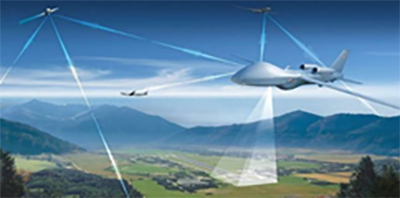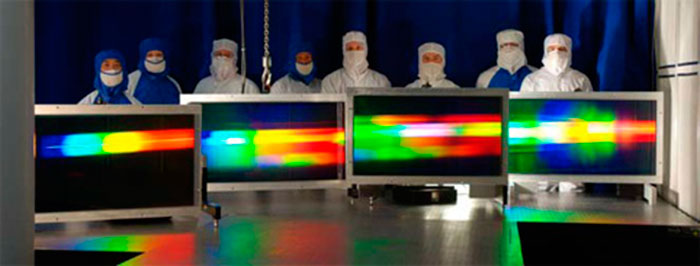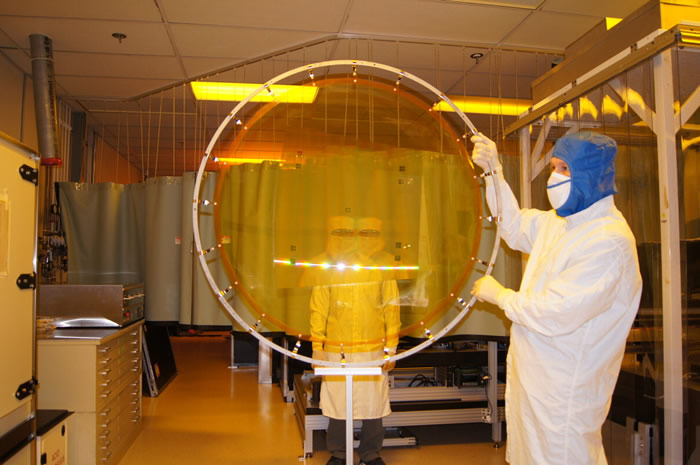Advancing Photon Science

Expanding Photonics Frontiers
Along with its primary missions—stockpile stewardship, high energy density science, Discovery Science, and energy security—the NIF & Photon Science Directorate also pursues research and development projects to innovate and develop cutting-edge technologies in support of those missions. The Directorate’s Photon Science program reflects the Laboratory’s core competency in lasers and optical science and technology.
NIF&PS is a long-standing world leader in developing advanced high-energy, high-average-power, pulsed, and ultrafast laser systems.
Photon Science advances the frontiers of photonics by conducting photon-based projects for energy, defense, homeland and stockpile security, basic science, and industrial competitiveness. The program strategically invests in new technologies and the development of large-scale photonic systems for federal and international agencies and industry sponsors.
Specific areas of the program’s technical expertise include petawatt (quadrillion-watt) peak-power and megawatt average-power laser technology, meter-scale diffractive optics, and the development of advanced laser crystals, fiber lasers, and transparent ceramics.
DoD Technologies
The NIF&PS Department of Defense Technologies (DoDT) program provides:
- Laser systems design
- Engineering and production for specific national security-related applications and missions
- Experimentally validated first-principles understanding of weapon lethality and vulnerability, and
- Evaluation and prediction of the emergence of potential threats.

The DoDT program is developing laser systems that will enable the tactical and strategic laser missions of the 21st century. Laser-based directed energy (DE) has the advantages of a deep magazine, low cost per shot, and delivery of energy to the target at the speed of light.
LLNL’s technological advances in high-energy laser sources and multiphysics modeling and simulation capabilities drawn from the weapons program enable unique understanding of laser-matter interactions. In addition, many component technologies are offshoots of the Department of Energy’s investment in lasers at LLNL, such as innovations in:
- Scaled, semiconductor diode-laser pump arrays
- Optical fiber technology and advanced adaptive optics (see Fiber Lasers)
- Large-scale optics
- Multilayer dielectric gratings, and
- Radio-frequency (RF) photonics.
Advanced Optical Technologies
The Advanced Optical Components and Technologies program develops, creates and provides critical optical components for laser-based missions at LLNL. Past projects focused on kinoform phase plates for LLNL’s Nova laser and on large-area, submicron-pitch holographic diffraction gratings for the Laboratory’s Advanced Radiographic Capability, a petawatt (quadrillion-watt)-class ultrashort-pulse laser.
Today, the optical team designs and fabricates a variety of custom diffractive optics for researchers worldwide, including:
- Multilayer dielectric and gold-overcoated master diffraction gratings for pulse compression (up to 1 meter in diameter)
- Ion-beam-etched transmission gratings
- Wet-etched gratings
- Multilevel-etched Fresnel lenses and phase plates (up to meter-scale)
- Segmented Fresnel lenses (multiple-meter scale)
- Continuous-contour optics, such as phase plates fabricated by wet-etch figuring
- Replicated polymeric freestanding and attached diffractive films (at 50-centimeters scale), and
- Many other specialty optics.
 Multilayer dielectric diffraction gratings up to 1 meter in diameter are manufactured entirely at LLNL and optimized for a diffraction efficiency of greater than 90 percent.
Multilayer dielectric diffraction gratings up to 1 meter in diameter are manufactured entirely at LLNL and optimized for a diffraction efficiency of greater than 90 percent. Meter-scale, lightweight diffractive lenses are being developed for next-generation space-based applications. The program has designed and fabricated large-aperture holographic gratings for high-power laser applications. LLNL provides large-aperture diffraction gratings to high-energy petawatt projects throughout the world.
Traditionally, LLNL has had world-leading efforts in fabrication of large-area laser and non-linear optical crystals. Recently, LLNL has also developed an ability to produce device-scale, laser-quality transparent ceramic optics with an emphasis on designer laser materials and components that will enable new, compact and efficient laser architectures for energy and defense applications. These efforts have been essential to expanding LLNL’s international leadership of average-power, high-peak-power and high-photon-energy systems and applications (see Advanced Photon Technologies).
 The first diffractive membrane optic, designed for a Defense Advanced Research Projects Agency (DARPA) project, was completed on July 25, 2011. The 80-centimeter-diameter, 18-micron-thick optic with 4-micron-wide critical dimensions was printed and etched using LLNL’s diffractive optic manufacturing capabilities.
The first diffractive membrane optic, designed for a Defense Advanced Research Projects Agency (DARPA) project, was completed on July 25, 2011. The 80-centimeter-diameter, 18-micron-thick optic with 4-micron-wide critical dimensions was printed and etched using LLNL’s diffractive optic manufacturing capabilities. More Information
“Turning an X-ray Eye on Universes, Large and Small,” Science & Technology Review, November, 2015
“Developing Lightweight Optics for Space,” Science & Technology Review, January, 2013
Next up: Advanced Photon Technologies



